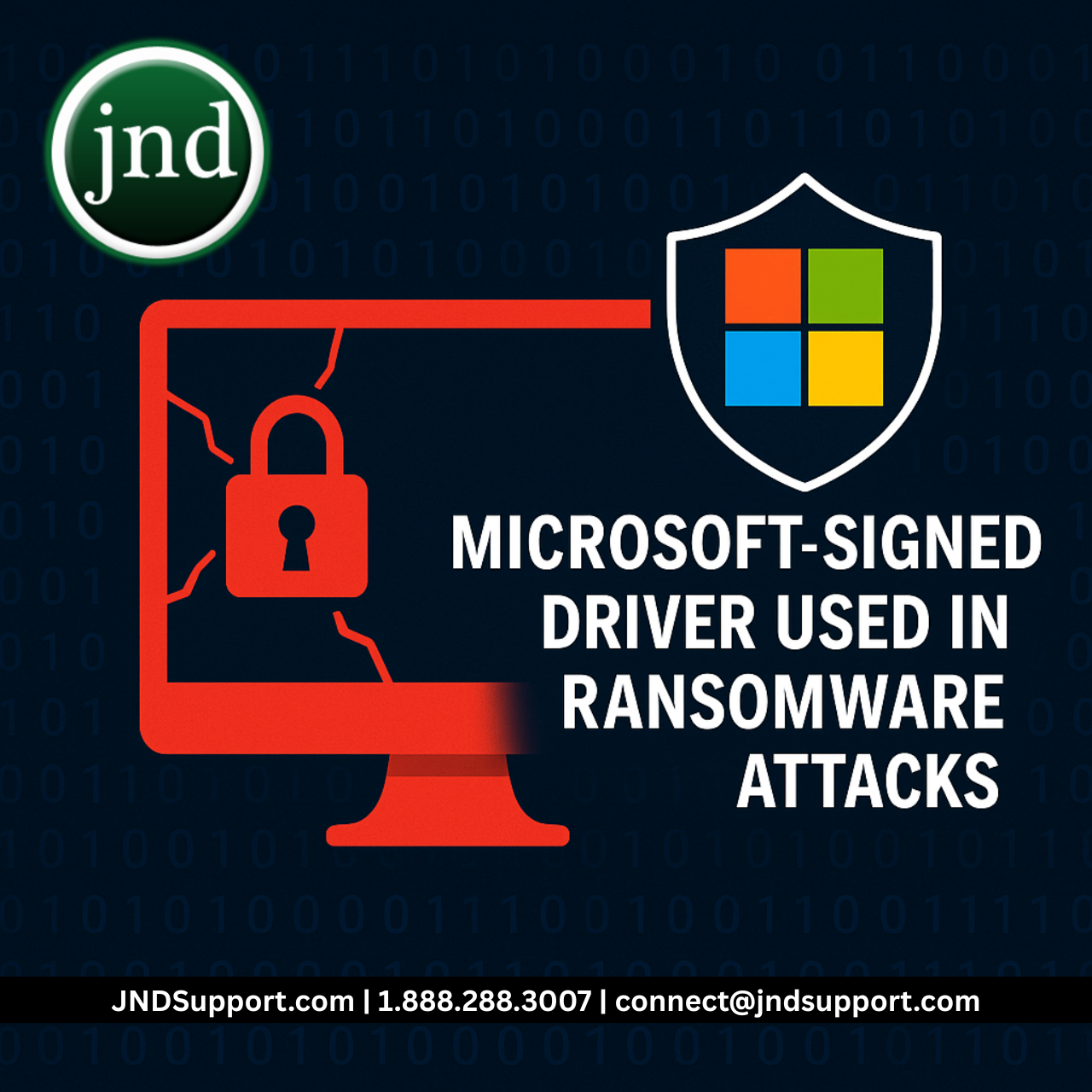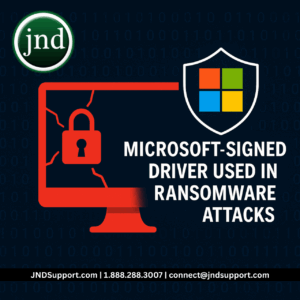
Cybercriminals have crossed a new threshold: they’re now exploiting Microsoft-signed drivers — software components that should be among the most trusted on a Windows system — to deploy ransomware. These attacks bypass traditional security controls by leveraging drivers with legitimate Microsoft digital signatures to disable endpoint defenses and take over systems at the kernel level.
What Are Microsoft-Signed Drivers?
Drivers are low-level programs that allow your operating system to interact with hardware like keyboards, graphics cards, or printers. To maintain security, Windows requires most drivers to be digitally signed by Microsoft.
This signature tells the system and any antivirus software: “This driver is trusted.”
Unfortunately, that trust has been abused by attackers.
How Attackers Exploited Signed Drivers
The Attack Chain
Initial Access: Through phishing, vulnerable public services, or credential theft.
Lateral Movement & Privilege Escalation: Gaining admin-level access.
Deployment of Microsoft-Signed Driver: A driver with malicious capability (but a valid Microsoft signature) is installed.
Security Evasion: The driver disables EDR and antivirus solutions.
Ransomware Payload Execution: Once defenses are neutralized, ransomware encrypts files and demands payment.
Real-World Examples
Ransomware groups like BlackCat (ALPHV), LockBit, and Hive have used signed drivers to bypass defenses.
These drivers were initially approved through Microsoft’s Windows Hardware Developer Program, exploiting gaps in the validation process.
Why This Is So Dangerous
Trusted by Default: Security tools often whitelist Microsoft-signed drivers.
Kernel-Level Control: Drivers run at the highest privilege level, with full system access.
Bypasses Antivirus & EDR: Security solutions are shut down before they can respond.
Harder to Detect: Since the driver is “trusted,” it avoids triggering standard alerts.
Microsoft’s Response
To mitigate the threat, Microsoft has:
Revoked certificates of malicious drivers.
Strengthened vetting for WHDP-submitted drivers.
Released updated blocklists for Windows Defender Application Control (WDAC) and Secure Boot.
You can view Microsoft’s driver blocklist guidance here.
How to Protect Your Organization
1. Enable the Microsoft Vulnerable Driver Blocklist
Turn on blocklist enforcement via WDAC or HVCI (Hypervisor-Protected Code Integrity).
2. Implement Application Control Policies
Use AppLocker or Windows Defender Application Control to restrict what drivers and apps can run.
3. Monitor Driver Installations
Use Sysmon, EDR, or SIEM tools to log and alert on driver changes, especially for unsigned or unusual drivers.
4. Restrict Admin Access
Limit who can install drivers or make kernel-level changes.
5. Stay Updated
Ensure all endpoints are patched, including AV/EDR agents and blocklists.
Need Help Securing Your Environment?
Ransomware threats are evolving — and so should your defenses. At JND Consulting Group, we specialize in helping organizations:
Detect and block malicious drivers
Harden Windows environments against kernel-level attacks
Develop rapid incident response plans
📞 Contact us today to schedule a risk assessment or consultation.

Microsoft-Signed Drivers Used in Ransomware Attacks: When Trust Becomes a Threat
Facebook Twitter LinkedIn Cybercriminals have crossed a new threshold: they’re now exploiting Microsoft-signed drivers — software components that should be among the most trusted on

Ransomware in the Age of AI: The New Battleground and How JND Consulting Group Keeps You Safe
Facebook Twitter LinkedIn In recent years, ransomware has evolved from a relatively crude cyber threat to a sophisticated, AI-fueled weapon capable of disrupting businesses, governments,

Overview of Department of Financial Services Cybersecurity Regulation
Facebook Twitter LinkedIn Navigating the New Cybersecurity Landscape In 2023, the Department of Financial Services (DFS) introduced amendments to its Cybersecurity Regulation, with the implementation
